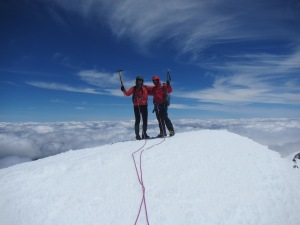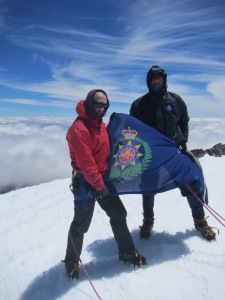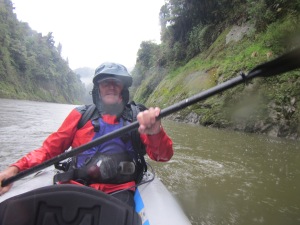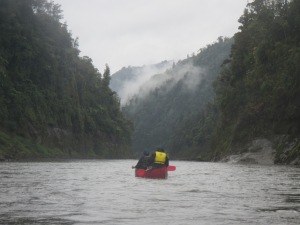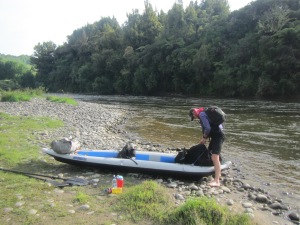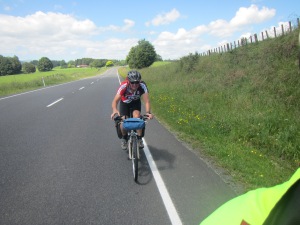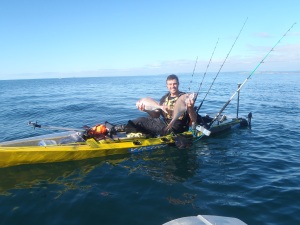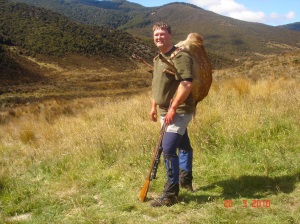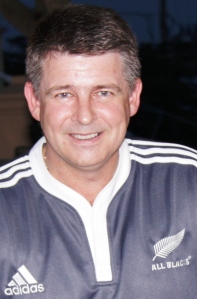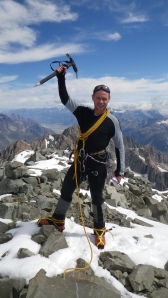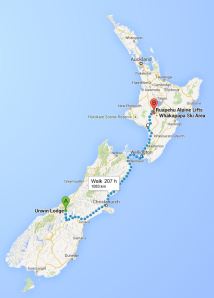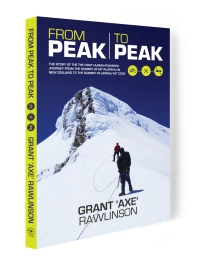The answer to this riddle is a copy of my new book ‘From Peak to Peak’!
I launched a pre-orders campaign 7 days ago and am very proud to say we have sold 150 copies already and are 60% towards the funding target of $5000 in pre-orders!
Thank you so much to those people who ordered already.
For those of you who have not ordered yet then please visit the link below to place your orders online. If you live in Singapore I will deliver for free. If you live outside Singapore – simply choose the shipping option and I will send the books to your postal address by email. Every book ordered through the pre-orders will be AUTOGRAPHED by me!
Order by clicking this LINK: https://publishizer.com/from-peak-to-peak/
There are options to buy:
– an ebook ($10)
– a single paperback copy ($25)
– a double paperback bundle ($50)
– a triple paperback bundle ($75)
– Five pack bundle ($100) – a saving of $5/book!
As a teaser – I have included below a sample of Chapter 4 – Pit of Exploding Fire

With my very patient and supportive publisher Mr Phoon Hwa after a radio interview this week on 93.8 LIVE for my new book ‘From Peak to Peak’
CHAPTER FOUR – PIT OF EXPLODING FIRE
DAY ONE
Ruapehu is Maori for ‘the pit of exploding fire’. Being an active volcano and the highest mountain in the North Island, it attracts a lot of visitors. During the winter months skiers carve up the slopes at the two commercial ski fields, Whakapapa and Turoa, and during the summer tourists, trekkers and climbers traverse the same slopes, revelling in the beautiful views.
Like any mountain, Ruapehu demands respect. Visitors can drive to an elevation of 1600m and continue on foot, and this ease of access can sometimes encourage ill-prepared and inexperienced climbers to venture where they shouldn’t. As a result, Ruapehu has claimed her fair share of lives over the years. What begins as a nice day walk in the sunshine can often end with a struggle to descend in whiteout conditions, strong winds, driving rain and snow.
During my winter climb of Ruapehu in 2011 with Jim, I had used plastic mountaineering boots with crampons and an ice axe. That climb had been on snow and ice all the way from lodge to summit. For our Peak to Peak attempt I made a fundamental mistake in assuming that in December, the Southern Hemisphere’s summer time, the snow would be limited to a smattering around the summit.
When Jim sent me a photo of the mountain two weeks before we left for NZ, I was in for a surprise. Ruapehu was still heavily plastered in snow, the white line starting only a few hundred metres above the lodge. What I’d envisaged as a simple scramble up rocky ground had now turned into a full-fledged snow and ice climb.
The problem was, Alan and I had sent all our mountaineering gear to Mt Cook Village in preparation for that mountain, which I knew was snow covered year-round. So I scrounged around to find an old pair of strap-on crampons in my storeroom, and I arranged for Jim to borrow ice axes from the Auckland Tramping Club. Jim would bring a spare set of crampons for Robert, and Alan opted to buy a simple pair of step-in crampons. These are used for walking on snow, as opposed to climbing, and have no front teeth to give purchase on steep ground. But for the moderately angled slopes of Ruapehu Alan thought step-in crampons would be okay.
Alan, Jim and I were confident using climbing gear on steep snow and icy ground. Robert however, had never held an ice axe in his life. In the weeks leading up to the trip he’d grown increasingly nervous, asking several times if I thought he’d be able to manage the climb, especially given he’d never worn crampons. With my usual exuberance I reminded him he’d been born and bred on a steep-sloped sheep farm, and that he’d probably find it an easy return to the days of his childhood. Except of course, that this time the ground would be covered in ice and he’d be wearing metal spikes on his feet…Anyway, I added flippantly, full instructions and training would be given and we’d have a rope for security, if needed.
On the official first day of Peak to Peak we rose at 5:30A.M. to a stunning morning. I had been sharing a room with my father, whose freight-train snore sent me crawling to a couch in the lounge area around midnight. But even if my ears were ringing, my hangover had passed, the storm had blown through and the sun shone brightly as Jim treated us to a sumptuous breakfast of sausages, bacon and eggs. I was full of hopeful anticipation of the day ahead.
We set-off at 7:30A.M. after an obligatory team photo. Our original plan had been for Alan, Jim, Robert, Dad and myself to make the one day climb, but Dad opted to wave us off and stay in the comfort of the lodge. I felt guilty leaving him behind after not having seen him for one year, and had been looking forward to sharing the experience with him. But even at the relatively low altitude of the lodge he had breathing difficulties, and owing to the amount of snow and ice up higher it was becoming clearer that this would not be the easy jaunt I’d first envisioned.
We plodded slowly up the rocky slopes of Whakapapa ski field. Alan and Jim were in front, chatting merrily away. I walked behind with Robert. My school friend had been training hard for the climb and over three months had lost 20kg. It was amazing to see him look and feel so good.
Unfortunately our conversation was cut short as I started having problems with my breathing. I suffer from asthma, though strangely enough, in the tropics and in Singapore it never affects me. As soon as I arrive in NZ and breathe the cold air, it returns. I had an old asthma inhaler with me which was about two years past its use-by-date. I puffed away on it, but it didn’t help much and the constriction would go on to plague me all day.
After one and a half hours climbing we hit the snowline and sat to don our crampons. I attached mine to my boots first, then helped Robert into his. He was nervous about wearing them and his first few steps were taken gingerly. “You only have to remember two things with crampons,” I explained, glancing nervously up the slope. “With each step, focus on stamping as many teeth into the snow as possible. Secondly, keep your feet well away from each other so you don’t trip over them. Easy right?”
Robert was not looking very confident, and I could tell from his voice that he was considering backing out. “You’ll be fine,” I reassured him, and to his immense credit (and possible gullibility) he took the words to heart and was soon quietly but steadily cramponing up the steep slope behind us.
After four hours we reached the crater rim, where we were met by strong gusts of icy wind. I had my warmest clothing on now, thermal layers, polar fleece wind breaker, and a shell jacket with gloves and hat. Regardless, it was uncomfortably cold whenever we stopped moving, the cold tearing through my layers to chill me to the bone.
As we climbed up to the rim I noticed Alan was having some problems with his in-step crampons. They were strapped to the bottom of his boots and appeared to be sliding and slipping off every couple of steps. He was forced to continuously stop and adjust them, which was slowing him down.
In the centre of Ruapehu’s caldera is a lake that never freezes, its heat generated by the volcanic activity beneath. When you climb from the Whakapapa side as we had, the actual summit of Ruapehu is on the opposite side of the crater rim. To reach the craggy point, named Tahurangi Peak, one must traverse right through the crater and around the crater lake, then up the steep crater wall onto the short summit ridge. Getting onto the summit ridge is the most difficult section of the climb, and involves 150m of exposed climbing. This is not difficult for a confident climber, but it’s still not a place you can afford to slip. I shot a furtive glance at Robert and forged onwards, praying that the snow would be firm enough for me to kick secure steps for him to follow.
As we crossed the crater we passed the Dome Shelter, a tiny hut offering shelter to climbers. In 2007, two climbers had been resting there overnight when the mountain erupted. One of the climbers was pinned in the hut by a boulder, and was incredibly lucky to make it out alive, suffering serious injuries that resulted in his leg having to be amputated.
Past the shelter we slowly made our way across the crater and were soon climbing the steep wall on the opposite side. Here I took the lead and kicked steps up the steep slope. The snow was in great condition and I was very relieved to see that Robert could follow my steps confidently. Jim and Alan followed slowly behind.
At the top of the wall I was met with a short, 2m vertical section that allowed me to pull myself up to the rim. Popping over, I was hit by the full fury of the wind. We had been sheltered from the worst of it on our way up, but it was sub-zero and absolutely freezing.
Caught in its roar, there was no easy way to communicate, so I took a quick video and screamed into my camera, “Day one of Peak to Peak, and there’s the summit of Tahurangi.” It was only 200m away horizontally, and around 100m above our heads. Robert came up into the wind followed by Alan and Jim, and we set-off for the most dangerous section of the climb—the exposed traverse onto the Skyline Ridge. Stepping onto it, I immediately noticed a change in the snow conditions. It was hard ice, exactly what I had been dreading. “Shit, shit shit…” I muttered to myself, thinking of Robert’s wife Denise and their two young boys.
At times I might have felt ill from the risk I placed upon myself, but being responsible for another person’s wellbeing compounded that anxiety tenfold. I had invited Robert on this climb, it had been my idea. When he’d asked me if he would be okay, he had put his faith in me, and I had told him that he would be looked after. Now, I was very concerned as to how he was going to cross 100m of this steep, exposed ice. Turoa ski field stretched far below us; it would be a very long fall if we made a mistake. And I knew I would never be able to live with myself. For the first time I regretted the decision to invite him.
“Okay, let’s rope up for this section!” I screamed into the wind. Jim had brought a rope and three climbing harnesses. I helped Rob into his harness and Jim and I also harnessed up. Alan tied a makeshift harness with a looped sling and then fastened himself to the back of the rope. I was absolutely freezing by the time we were ready to move again. The sky was clear, but this was not a nice day for climbing. I longed to get to the summit quickly and head back down, where I could begin to warm up again.
I stepped onto the bridge, the ice so hard that my boots and crampons could not even make an impression. Unable to kick any decent footsteps for Robert to follow, I resorted to cutting steps with my ice axe. This was slow going, the head bouncing off each impact, until I had cut my knuckles open and left a trail of bloody spots for the guys to follow. I decided to return deliberately and slowly, kicking tiny steps in the hope that the others could follow.
Robert seemed to be moving okay. He weighed around 90kg, and I clocked in at about 68kg. I prayed he did not slip and fall as I was unsure I could hold his weight if he did.
The rope was moving very slowly and I looked back to discover that Alan was having all sorts of problems. His small instep crampons were not suited to climbing the rock-hard ice, and he was having to cut each step with his axe. He later told me he nearly fell, twice. After 30 minutes of painstaking progress in the blistering wind, and nowhere near enough physical exertion to keep my body temperature up, my limbs felt like concrete. “Hurry up guys…” I muttered as I stood stamping my feet and trying to get warm.
Metre by metre the rope inched up until finally I reached the summit, Tahurangi Peak, the highest point in the North Island. Robert soon joined me, followed by Jim and Alan a few minutes later. By this stage I had been standing in this incredibly exposed position for long enough to grow seriously concerned by how cold I was. My fingers were very painful and I knew from experience they were starting to get frost nipped.
I should have been elated to reach the summit, but I was not enjoying the experience and was secretly dreading the fact we had to climb down the same steep ice we’d just struggled up. Despite my gloomy outlook, I smiled in admiration of Alan for reaching the top. I would not have liked to climb those hard, icy slopes using tiny instep crampons. In fact out of all the climbers I knew, he was one of the only guys with enough skill and nerve to actually manage it.
It was one of the many reasons I loved adventuring with Alan. Time and time again he proved himself in difficult situations. And as it turned out, it was not the last time he would have to.
My camera froze and ceased to work seconds after I pulled it from the safety of my jacket, so there would be no summit video. But in many ways I was glad; I wanted to get off that damn mountain as quickly as possible. After a short rest we set off back down in the reverse order we had ascended.
“Slowly but surely Rob–make every step is secure before you put your weight down–slipping’s not an option here,” I yelled into the wind.
He squinted at me. “If I had known it would be like this, I never would have come.” There was no smile to soften the regret in this statement, and the roast chicken joke I’d been formulating froze upon my lips. It was probably for the best.
Slowly we retraced our steps. I felt for Alan, having to climb down the hard ice in his trekking shoes and instep crampons. It must have been a nerve wracking experience, but somehow he did it and soon we had popped back down the short, vertical wall to shelter and rest, out of the bluster.
For the first time in two hours I could relax and begin to warm my hands, as we congratulated each other and enjoyed some food and drinks in the sunshine. It was a gorgeous spot to have a break and sitting high above the crater lake we could the distant peaks of Tongariro, Ngauruhoe, and the dark blue waters of Lake Taupo.
Unfortunately, a volcanic rumbling was on its way. During our final traverse back down the crater wall I was overcome with an intense, and entirely unexpected, need to empty my bowels. It was one of those awful attacks that sweep through your entire body, and the cramping waves left me doubled over my axe and groaning. The ground was too steep to safely stop, a classic case of being stuck between a rock and a hard place. I was also tied to three other men, who were slowly ambling down the mountain and quite unaware of the fact my digestive system was about to unload a WMD.
I finally got to a point where the slope eased off and untied myself, scuttling in an odd kind of crab walk towards a large rock jutting up from the snow. It was a touch and go moment. As I crouched down holding my pants in one hand, my body motions now well and truly beyond my control, my free hand went in search of a small roll of toilet paper from inside my pack. Fingers trembling I eventually found it, only to pull it out, fumble, and watch in horror as it bounced down the snow to rest about ten meters away. I crouched there in disbelief, staring at it, and willing it to defy gravity and roll back up to me. I waited. It did not move. I got angry, and then my bum alerted me to the fact that I would soon be getting frostbite in places no one should ever have to suffer. With a grunt of disbelief I accepted the inevitable and realised there was no option but to pull up my trousers and gingerly walk down the slope to retrieve it. Needless to say, the whole episode was extremely…unpleasant, and it took me some time (and almost a whole roll of toilet paper) to get myself into respectable shape again.
To make matters worse, the team had been sitting about fifty meters away watching the entire episode unfold, generously yelling all manner of helpful tips and advice, which only served to infuriate me more. As we set off back down the hill my grumpiness subsided, and I even managed a small grin. ‘Pit of exploding fire’, indeed.
At 5:30P.M. we arrived back at the lodge. It had taken us 10.5 hours to summit Ruapehu and return. Rob and I rested our sore feet, grateful to be back in civilisation. Alan and Jim stood out the front chatting away, as if they’d just returned from a stroll down the street for some milk.
That evening Robert called his wife Denise, who had been following our progress on the GPS SPOT Tracker in my backpack. This beamed our positions via satellite to a website which followers could view in real time, on a 3D map. When Denise saw the beacon go straight down the crater wall for fifty meters, she thought one of us had fallen off the mountain. Robert took great pleasure in enlightening her, but impersonating my crab walk over the phone proved almost impossible.
After the dicey summit, I was really relieved to see how Robert felt about his achievement. On the mountain he’d been wracked with doubt, at one point saying he wished he hadn’t come. However I could see he was extremely proud of himself, and deserved to be. He had trained hard for four months, lost a significant amount of weight, and achieved something he’d thought himself incapable of.
As we sat watching the sunset, he told me that only a few months earlier he’d had difficulties bending over to pick things up. Now, after his training program and weight loss his body had enjoyed a major overhaul. It had only been a 10.5 hour climb, but the positive effects on Robert’s life were profound. It was reaffirming, and reminded me why I love adventure and challenge as much as I do. Losing weight and maintaining fitness are one thing, but gaining confidence is one of the greatest gifts you can give yourself. Nothing of value in life can be obtained without some risk and effort, and that night I slept a happy man.







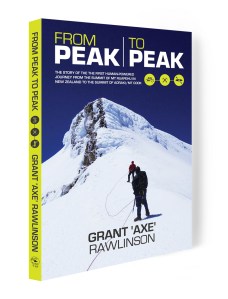










































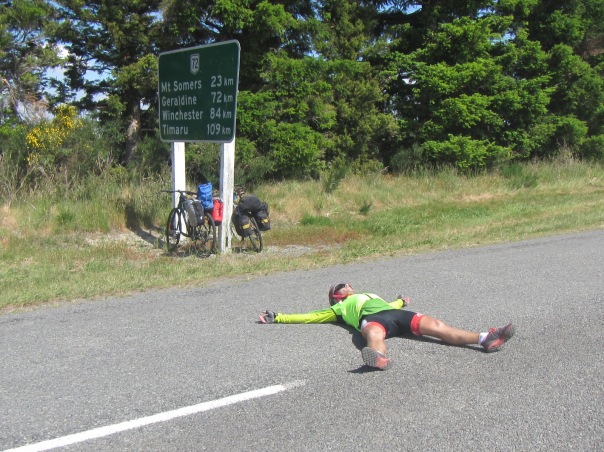


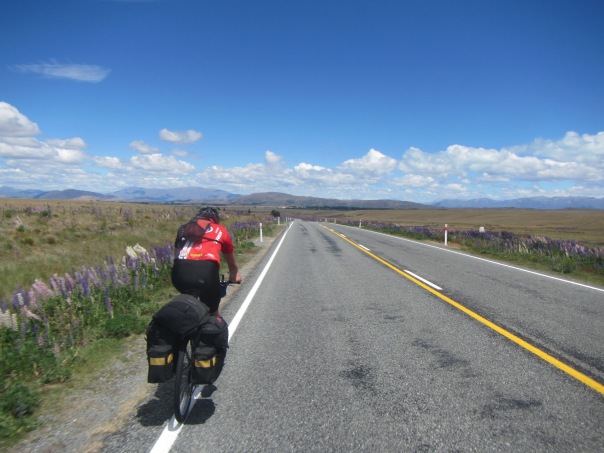








![IMG_1103[1]](https://axeoneverest.com/wp-content/uploads/2013/12/img_11031.jpg?w=604&h=453)






